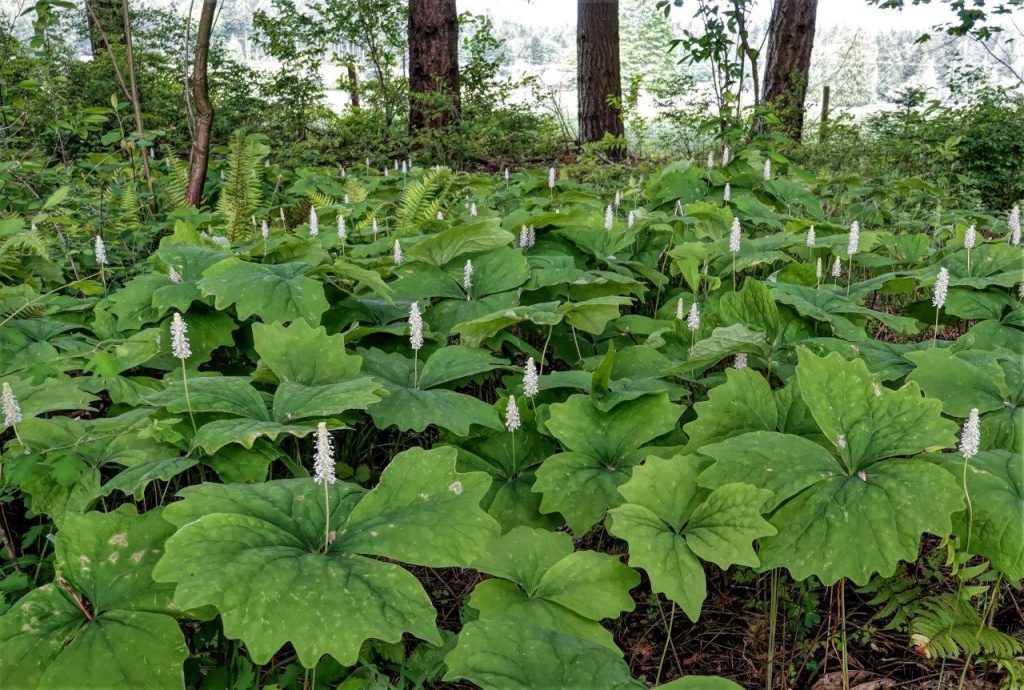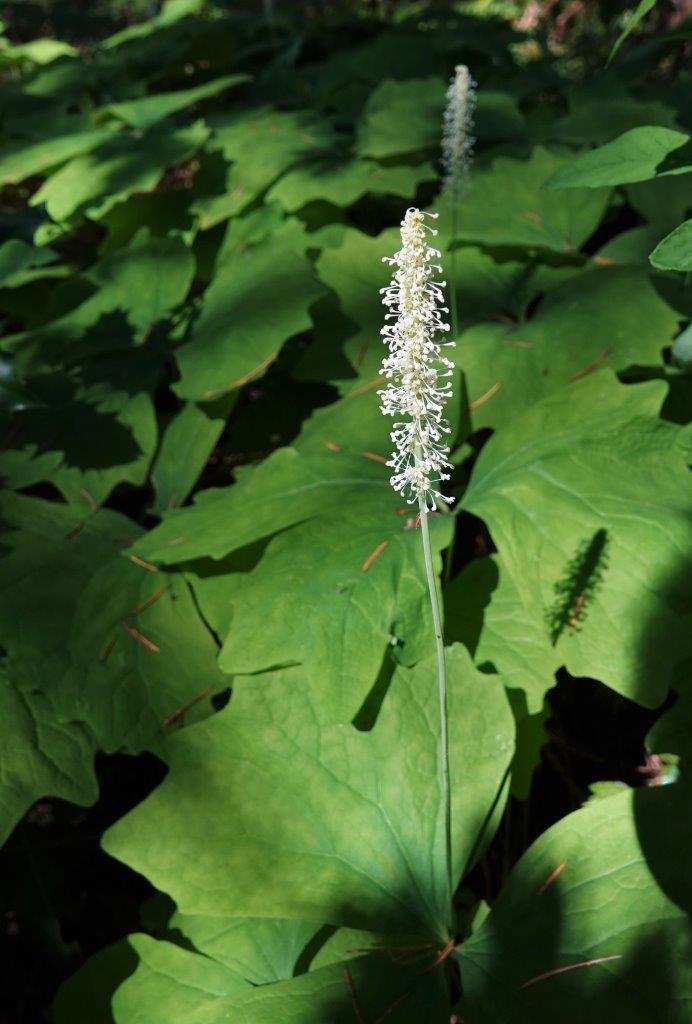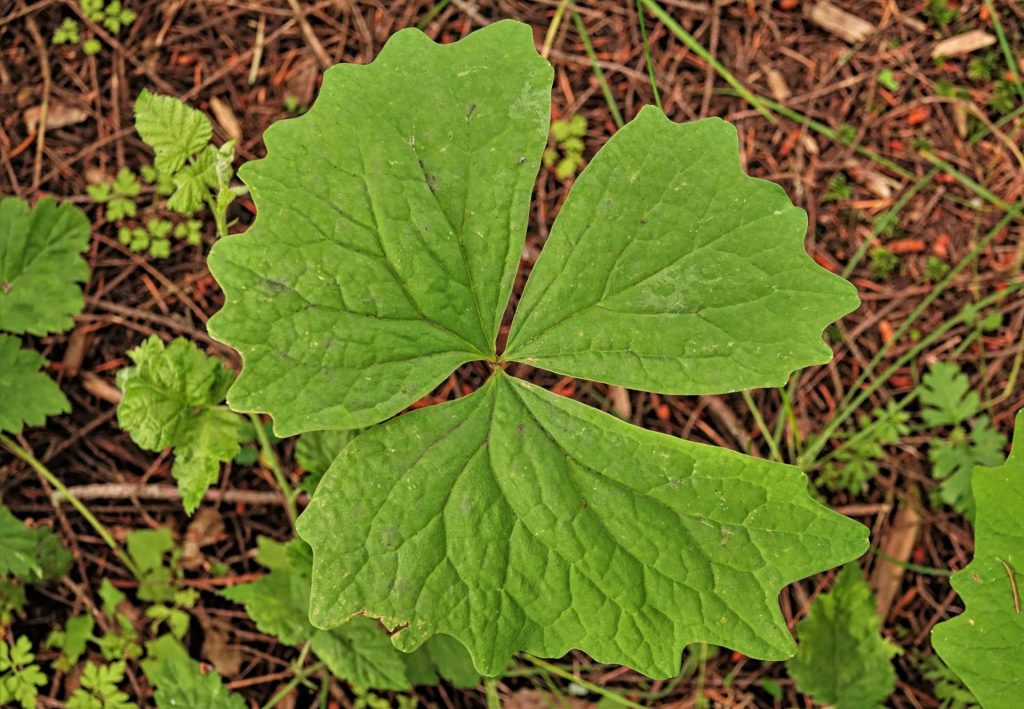Family: Berberidaceae
Common name: Vanilla-leaf
E-flora BC: http://linnet.geog.ubc.ca/Atlas/Atlas.aspx?sciname=Achlys%20triphylla
Wikipedia: https://en.wikipedia.org/wiki/Achlys_triphylla
Vanilla-leaf is a common understory plants in the woods around Nanaimo. The plant is about 30 cm tall. The scientific name is descriptive, tri = three, phylla = leaf. You’ll note that each compound leaf has 3 leaflets. The leaflets are broadest at the tip and narrowest where they attach to the leaf stalk (the ‘petiole’). When you touch the leaf, you’ll notice that it has a soft surface texture.
We usually find vanilla-leaf where there’s a bit of moisture in the ground and where there is some shade from taller plants.



Vanilla-leaf contains sweet-smelling compounds called coumarins (https://pubs.acs.org/doi/pdfplus/10.1021/ja01958a026). Some people pick bunches of vanilla-leaf leaves in early summer, hang the bunches upside down to dry them and then enjoy the scent throughout the year. Try crushing a bit of vanilla-leaf between your fingers and see if you can smell the coumarins.